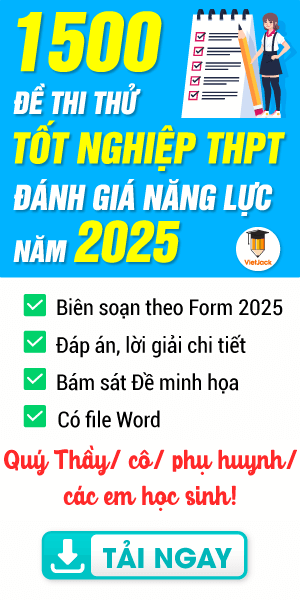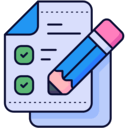Giáo án Tiếng Anh 12 Global Success Unit 2 Reading
Giáo án Tiếng Anh 12 Global Success Unit 2 Reading
Chỉ từ 300k mua trọn bộ Kế hoạch bài dạy (KHBD) hay Giáo án Tiếng Anh 12 Global Success bản word phong cách hiện đại, trình bày đẹp mắt, dễ dàng chỉnh sửa:
- B1: gửi phí vào tk:
1133836868- CT TNHH DAU TU VA DV GD VIETJACK - Ngân hàng MB (QR) - B2: Nhắn tin tới Zalo VietJack Official - nhấn vào đây để thông báo và nhận đề thi
I. OBJECTIVES
By the end of this lesson, Ss will be able to:
1. Knowledge
- Develop reading skills for general ideas and for specific information about globalisation and cultural identity.
2. Competences
- Develop communication skills and creativity;
- Be collaborative and supportive in pair work and teamwork;
- Develop presentation skills;
- Actively join in class activities.
3. Personal qualities
- Be respectful of cultural diversity;
- Develop self-study skills.
II. MATERIALS
- Grade 12 textbook, Unit 2, Reading
- Computer connected to the Internet
- Projector / TV
- hoclieu.vn
III. PROCEDURES
1. WARM-UP (5 mins)
|
a. Objectives: - To stir up the atmosphere and activate students’ knowledge about the figure they are going to learn about in the lesson; - To set the context for the reading part; - To enhance students’ skills of cooperating with teammates. b. Content: - Video watching c. Expected outcomes: - Students join the activity enthusiastically and gain knowledge on the topic. d. Organisation: |
|
|
TEACHER-STUDENTS’ ACTIVITIES |
CONTENTS |
|
Video watching - Teacher divides the class into 2 groups. - Students work in groups to do the activity. - Before playing the video, teacher asks Ss to watch carefully and try to remember as many details as possible. Ss can take notes if they want. - Students raise their hands to answer the questions. - Teacher shows questions one by one, Ss raise their hands and say BINGO to grab the chance to answer. - If the answer is correct, they get one point for their team. - The team with the higher score will be the winner. |
Link: https://www.youtube.com/watch?v=zfn0XHCfDHA Questions: 1. Environmental problems of globalisation include global warming, the _________ of natural resources and the production of harmful chemicals. 2. Polluting industries, logging forest and exploiting _________ are consequences of globalisation. 3. Loss of _________ is another effect of globalisation. 4. Globalisation supports faster _________ growth and quicker access to new technology. Answers: 1. depletion 2. labour 3. culture 4. economic |
e. Assessment
- Teacher observes and gives feedback.
2. ACTIVITY 1: PRE-READING (9 mins)
|
a. Objectives: - To get students learn vocabulary related to the topic; - To activate prior knowledge about the topic and get Ss involved in the lesson. b. Content: - Task 1: Work in pairs. Discuss the questions. (p.23) - Pre-teach vocabulary c. Expected outcomes: - Students can identify some vocabulary related to the topic. d. Organisation |
|
|
TEACHER-STUDENTS’ ACTIVITIES |
CONTENTS |
|
Task 1. Work in pairs. Discuss the questions. (4 mins) - Ask Ss to work in pairs to answer the questions. - Students work in pairs and answer the questions. - Ask some pairs to share their answers with the whole class. - Students write questions they want to know on the board. - Ask what other information they want to know about globalisation. Write their questions on the board. - Introduce the topic of the reading text. |
Questions: 1. What is globalisation? 2. How does globalisation affect local cultures? |
|
Vocabulary pre-teaching (5 mins) - Teacher introduces the vocabulary. - Teacher explains the meaning of the new vocabulary by pictures. - Teacher checks students’ understanding with the “Rub out and remember” technique. - Students listen to the teacher’s explanation and guess the words. - Teacher reveals that these five words will appear in the reading text and asks students to open their textbook to discover further. - Students write down the new words on their notebook. |
New words: 1. globalisation (n) 2. custom (n) 3. ingredient (n) 4. speciality (n) 5. captivate (v) 6. keep up with (ph.v) |
e. Assessment
- Teacher checks students’ pronunciation and gives feedback.
- Teacher observes Ss’ writing of vocabulary in their notebooks.
3. ACTIVITY 2: WHILE-READING (20 mins)
|
a. Objectives: - To get Ss to practise guessing the meaning of words from context; - To help Ss develop reading skills for general and specific information; b. Content: - Task 2: Read the article again. Match each section (A–C) with a heading (1–5). There are TWO extra headings. (p.23-24) - Task 3: Read the article again and choose the correct answer A, B, or C. (p.24-25) c. Expected outcomes: - Students can thoroughly understand the content of the text and complete the tasks successfully d. Organisation |
|
|
TEACHER-STUDENTS’ ACTIVITIES |
CONTENTS |
|
Task 2: Read the article again. Match each section (A–C) with a heading (1–5). There are TWO extra headings. (8 mins) - Read the four headings and check understanding. - Ask Ss to read the text and identify the main idea of each paragraph, then match each heading with a suitable paragraph. Remind Ss to underline key words or phrases in the text which help them identify the correct heading. - Students read the headings first, then skim through each section. - Check answers as a class. Ask individual Ss to call out their answers and provide evidence for each one from the text. - Students check answers with the whole class and give explanations for their choice. |
Answer key: A - 3 B - 4 C - 2 Strategy: Reading for main ideas (Headings) To read and understand the main ideas of a text and select the best headings for a section, students should: 1. Read the headings carefully. Make sure you understand them. 2. Skim through each section, and choose the heading that covers the ideas of the whole section. 3. Pay attention to the number of extra headings. Remember that incorrect headings for a section are often “irrelevant” (i.e., not mentioned in the section), “incorrect” (i.e., not true according to the text), “too narrow” (i.e., only representing part of the section) or “too general” (i.e., not specific to that section only). |
|
Task 3: Read the article again and choose the correct answer A, B, or C. (12 mins) - Ask Ss to read the questions and four options, and underline the key words in each of them. - Students read the headings first, then skim through each section. - CHeck whether Ss have got the right keywords. - Ask Ss to scan the text to locate the key words, as well as paraphrases of these keywords. Then choose the option that matches the information in the text. Remind them to watch out for distractors, especially options that may be mentioned in part in the text, but are not true. Students choose the heading that covers the ideas of the whole section. - Have Ss work in pairs or groups to compare answers. - Students check answers with the whole class and give explanations for their choice. - In weaker classes, check answers as a class and give the clues by highlighting the phrases or sentences that contain the information in the article. - In stronger class, ask Ss to explain their answers by providing clues from the text. |
Answer key: 1. C 2. B 3. A 4. B 5. B Exam strategy: Reading for specific information: 1. Read the questions and three options (A, B, and C ) and underline the key words in the questions. 2. Read the text and locate the key words, as well as paraphrases of these keywords. 3. Choose the option that matches the information in the text. Watch out for distractors, especially options that may be mentioned in part in the text, but are not true. Exam strategy: reading for negative facts 1. Read and underline the key words in the questions and four options. 2. Read the text and locate the key words, as well as paraphrases of these keywords. 3. Eliminate the options containing the ideas/information mentioned in the text. The answer is the option which has wrong/ different information or not stated in the text. |
e. Assessment
- Teacher’s observation on Ss’ performance.
- Teacher’s feedback and peers’ feedback.
4. ACTIVITY 3: POST-READING (8 mins)
|
a. Objectives: - To check students’ understanding about the reading passage; - To help some students enhance presentation skills; - To practise team working; - To give students authentic practice in using target language. b. Content: - Task 4: Work in groups. Discuss the following question. What are some other effects of globalisation on cultural diversity? Give some examples in the context of Viet Nam. (p.25) c. Expected outcomes: - Students can use the language and ideas from the unit to talk about other effects of globalisation on cultural diversity and give examples in the context of Viet Nam d. Organisation |
|
|
TEACHER’S ACTIVITIES |
CONTENTS |
|
Task 5: Work in groups. Discuss the following question. What are some other effects of globalisation on cultural diversity? Give some examples in the context of Viet NAM - Ask Ss to work in groups. Have them discuss which achievement by Steve Jobs they find most admirable. Encourage them to explain why they admire that achievement the most. - Students share their answers with the whole class. - Invite some groups to share their answers with the whole class. - Ask other Ss to give comments and correct any mistakes if possible. - Students listen and give feedback. |
Suggested answers: Globalisation can foster cultural exchange, enabling individuals from different backgrounds to learn from one another, celebrate diversity, and develop a deeper appreciation for varied cultural expressions. |
e. Assessment
- Teacher’s observation on Ss’ performance.
- Teacher’s feedback and peers’ feedback.
5. CONSOLIDATION (3 mins)
a. Wrap-up
- Teacher asks students to talk about what they have learnt in the lesson.
b. Homework
- Write a short paragraph about the effects of globalisation on cultural identity.
- Do exercises in the workbook.
- Prepare for the next lesson – Speaking.
................................
................................
................................
Trên đây là nguồn học liệu Giáo án Tiếng Anh 12 Global Success miễn phí của NXB Giáo dục Việt Nam. Để xem chi tiết, mời bạn tham khảo: Giáo án Tiếng Anh 12 Global Success (NXB Giáo dục)
Để mua Kế hoạch bài dạy (KHBD) hay Giáo án Tiếng Anh 12 năm 2025 mới nhất, mời Thầy/Cô vui lòng xem thử:
Xem thêm các bài soạn Giáo án Tiếng Anh lớp 12 Global Success (bộ sách Kết nối tri thức) chuẩn khác:
Đã có app VietJack trên điện thoại, giải bài tập SGK, SBT Soạn văn, Văn mẫu, Thi online, Bài giảng....miễn phí. Tải ngay ứng dụng trên Android và iOS.
Theo dõi chúng tôi miễn phí trên mạng xã hội facebook và youtube:Nếu thấy hay, hãy động viên và chia sẻ nhé! Các bình luận không phù hợp với nội quy bình luận trang web sẽ bị cấm bình luận vĩnh viễn.
- Giáo án lớp 12 (các môn học)
- Giáo án điện tử lớp 12 (các môn học)
- Giáo án Toán 12
- Giáo án Ngữ văn 12
- Giáo án Vật Lí 12
- Giáo án Hóa học 12
- Giáo án Sinh học 12
- Giáo án Địa Lí 12
- Giáo án Lịch Sử 12
- Giáo án Lịch Sử 12 mới
- Giáo án GDCD 12
- Giáo án Kinh tế Pháp luật 12
- Giáo án Tin học 12
- Giáo án Công nghệ 12
- Giáo án GDQP 12
- Đề thi lớp 12 (các môn học)
- Đề thi Ngữ văn 12
- Đề thi Toán 12
- Đề thi Tiếng Anh 12 mới
- Đề thi Tiếng Anh 12
- Đề thi Vật Lí 12
- Đề thi Hóa học 12
- Đề thi Sinh học 12
- Đề thi Địa Lí 12
- Đề thi Lịch Sử 12
- Đề thi Giáo dục Kinh tế Pháp luật 12
- Đề thi Giáo dục quốc phòng 12
- Đề thi Tin học 12
- Đề thi Công nghệ 12




 Giải bài tập SGK & SBT
Giải bài tập SGK & SBT
 Tài liệu giáo viên
Tài liệu giáo viên
 Sách
Sách
 Khóa học
Khóa học
 Thi online
Thi online
 Hỏi đáp
Hỏi đáp

